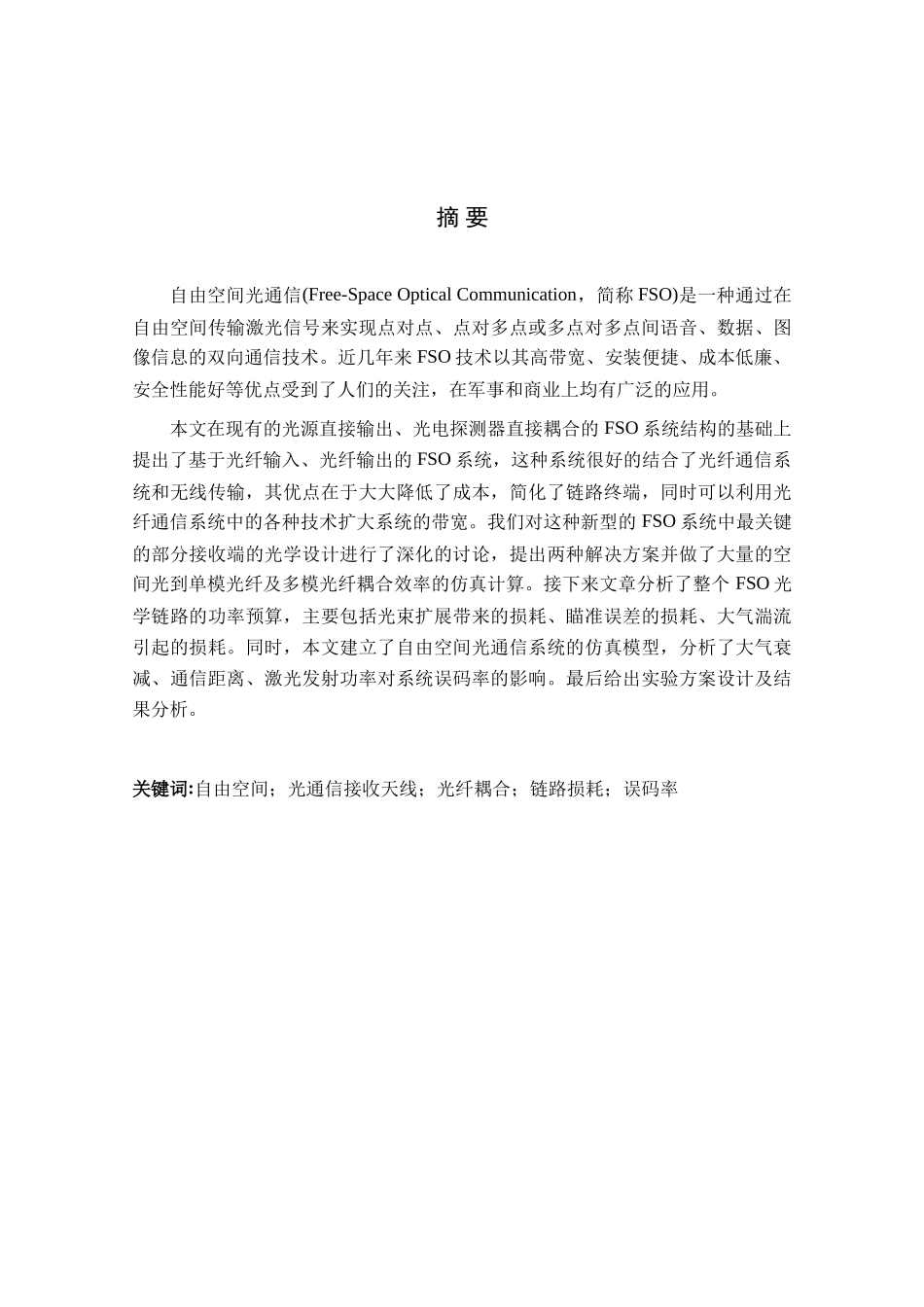摘 要自由空间光通信(Free-Space Optical Communication,简称 FSO)是一种通过在自由空间传输激光信号来实现点对点、点对多点或多点对多点间语音、数据、图像信息的双向通信技术。近几年来 FSO 技术以其高带宽、安装便捷、成本低廉、安全性能好等优点受到了人们的关注,在军事和商业上均有广泛的应用。本文在现有的光源直接输出、光电探测器直接耦合的 FSO 系统结构的基础上提出了基于光纤输入、光纤输出的 FSO 系统,这种系统很好的结合了光纤通信系统和无线传输,其优点在于大大降低了成本,简化了链路终端,同时可以利用光纤通信系统中的各种技术扩大系统的带宽。我们对这种新型的 FSO 系统中最关键的部分接收端的光学设计进行了深化的讨论,提出两种解决方案并做了大量的空间光到单模光纤及多模光纤耦合效率的仿真计算。接下来文章分析了整个 FSO 光学链路的功率预算,主要包括光束扩展带来的损耗、瞄准误差的损耗、大气湍流引起的损耗。同时,本文建立了自由空间光通信系统的仿真模型,分析了大气衰减、通信距离、激光发射功率对系统误码率的影响。最后给出实验方案设计及结果分析。关键词:自由空间;光通信接收天线;光纤耦合;链路损耗;误码率ABSTRACTFree-Optical Communication is a promising technology through transmitting laser signals in the atmosphere channel to realize the communication of voice image and between point-to-point, point-to-multipoint and multipoint-to-multipoint. FSO has received a great deal of attenuation lately both in the military and civilian information society due its huge capacity, rapid deployment, low cost and high security.In this dissertation, we put forward an all-optical free-space link structure based on the previous diode coupled structure. This new structure can be well integrated with fiber-optical communication networks with lower cost. The most crucial part of the link design turn out to be the receiver optics and several design solutions were investigated. We do a number off single mode fiber coupling efficiency and multimode fiber coupling efficiency calculations to s...


